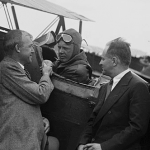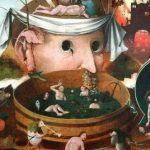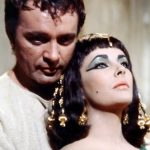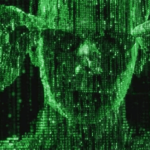 History
History  History
History  Weird Stuff
Weird Stuff 10 Superstitious Beliefs That Once Consumed Entire Cultures
 History
History 10 Bizarre Friendly Fire Incidents in Military History
 Technology
Technology 10 Modern Technologies That Accidentally Imitate Ancient Magic
 Mysteries
Mysteries 10 Mysteries of the Human Genome
 Weird Stuff
Weird Stuff 10 Things So Rare They’ve Only Been Found Once
 History
History 10 Legends Whose Last Moments Undid Their Glory
 Health
Health 10 Futuristic Ideas to Treat Common Medical Problems
 Weird Stuff
Weird Stuff Ten Surreal Attempts to Reverse Baldness
 Facts
Facts 10 U.S. Government Contingency Plans for the Unthinkable
 History
History 10 Odd Things Colonial Americans Kept at Home
 Weird Stuff
Weird Stuff 10 Superstitious Beliefs That Once Consumed Entire Cultures
 History
History 10 Bizarre Friendly Fire Incidents in Military History
Who's Behind Listverse?

Jamie Frater
Head Editor
Jamie founded Listverse due to an insatiable desire to share fascinating, obscure, and bizarre facts. He has been a guest speaker on numerous national radio and television stations and is a five time published author.
More About Us Technology
Technology 10 Modern Technologies That Accidentally Imitate Ancient Magic
 Mysteries
Mysteries 10 Mysteries of the Human Genome
 Weird Stuff
Weird Stuff 10 Things So Rare They’ve Only Been Found Once
 History
History 10 Legends Whose Last Moments Undid Their Glory
 Health
Health 10 Futuristic Ideas to Treat Common Medical Problems
 Weird Stuff
Weird Stuff Ten Surreal Attempts to Reverse Baldness
 Facts
Facts 10 U.S. Government Contingency Plans for the Unthinkable
10 Famous Movie Villains Inspired by Real People
The best movie villains affect more than just the film’s protagonist. They practically jump out of the screen and live in our nightmares. The only thing we call fall back on is that old comfort many of us learned when we were young, “It’s only a movie.”
But time and time again, we’re reminded that real life is often stranger than fiction. A surprising number of the best movie villains were either inspired by real-life villains or based almost directly on their most notorious deeds. It turns out the big screen is just a reflection of our nightmares.
Related: 10 Films Where the Villain Overshadowed the Hero
10 Candyman: Ruthie Mae McCoy’s Murderers
The villain featured in the Clive Barker short story “The Forbidden” was largely inspired by a grisly story Barker’s grandmother once told him. For his 1992 film adaptation of that story (which focused on themes of racial inequalities in the Chicago area), director and writer Bernard Rose was seemingly inspired by the truly terrifying murder of Ruthie Mae McCoy.
On April 22, 1987, Mrs. McCoy called the police and told them that someone was coming in through her bathroom to murder her. However, police didn’t enter her apartment until several days later when they found that McCoy had been shot and killed. An investigation revealed that the murders had indeed entered McCoy’s apartment through her bathroom medicine cabinet via an adjacent building. The Candyman movie’s legendary villain also often enters people’s homes through their mirrors, and one of his earliest victims in the movie is named after McCoy.[1]
9 Auric Goldfinger: Ernő Goldfinger and Charles W. Engelhard Jr.
It’s believed that aspects of the iconic Bond villain Auric Goldfinger (such as his lifestyle and love of a particular mineral) are based on real-life industrial tycoon Charles W. Engelhard Jr. At the very least, Englehard embraced that idea and began referring to his stewardess as “Pussy Galore” after the movie was released.
But the bigger inspiration was the architect Ernő Goldfinger. Goldfinger author Ian Fleming was among those at the time who objected to Ernő Goldfinger’s controversial demolition and construction projects. So he reportedly borrowed Goldfinger’s name and aspects of his appearance when creating Auric Goldfinger. Ernő Goldfinger even sued Fleming over the similarities, which caused Fleming to threaten to rename the character “Goldprick.” The matter was later settled out of court.[2]
8 Nurse Ratched: A Nurse Author Ken Kesey Worked With
For some, the name Nurse Ratched is synonymous with villainy. With her cold, cruel nature, the One Flew Over the Cuckoo’s Nest nurse embodies our ideas of institutional authoritarianism. As such, it may shock you to learn that the Nurse Ratched character is based on a real nurse who presided over the psychiatric ward at the institution Cuckoo’s Nest author Ken Kesey once worked at.
Yet, years later, Kessey accidentally encountered the real-life Nurse Ratched (whose name is unknown). Kessey recalls that she was “smaller than I remembered and a whole lot more human.” Fortunately, the real-life nurse didn’t hold a grudge against the author over his characterization of her. Interestingly, more modern interpretations of the Ratched character have also argued that she may have always been a more complex figure.[3]
7 Emperor Palpatine: Richard Nixon
While numerous aspects of Star Wars are based on actual people and events, the evil Emperor Palpatine has one of the most direct real-life parallels. In J.W. Rinzler’s The Making of Star Wars: Return of the Jedi, the author reveals that Lucas based the subversive politician who rose to power through lies on none other than former President of the United States, Richard Nixon.
Lucas expanded upon that inspiration in a 2005 interview with the Chicago Tribune in which he stated that Star Wars was intended to be a response to the Vietnam War and Nixon’s bid for a second presidential term. At that time, Lucas became fascinated with the idea that democracies become dictatorships when they are given to dictators rather than conquered by them. That idea is presented more directly in the Star Wars prequels and is fascinating food for thought in the modern world.[4]
6 Michael Myers: An Unidentified Child In a Psychiatric Ward
Iconic horror movie slasher Michael Myers is named after the person who helped distribute director John Carpenter’s previous film, Assault on Precinct 13. However, Carpenter intended for the use of Myers’s name to be a simple tribute to the distributor. The more insidious aspects of Myers are based on a far more disturbing encounter from Carpenter’s past.
While attending Western Kentucky University, Carpenter visited a psychiatric hospital. There, he saw a patient who Carpenter says couldn’t have been older than 12 or 13. Yet the director recalls that the young patient had this “evil stare” that he describes as the “creepiest thing I’d ever seen.” That stare became the basis of Myers’s character. It inspired the legendary monologue Donald Pleasence’s character (Dr. Sam Loomis) gives when describing the evil behind Myers’s eyes and in his soul.[5]
5 Keyser Söze: John List
For much of The Usual Suspects, we’re led to believe that Keyser Söze is the name of a criminal who has become something of a boogeyman/urban legend in the underworld. It’s not until the film’s famous twist that we learn about the “real” Keyser Söze and his incredible disappearing acts. Those aspects of the character are based on the story of serial killer John List.
In 1971, John List murdered his family and seemingly vanished from the face of the earth. An investigation revealed that List had meticulously planned both the events of the murder and his subsequent disappearance. List remained on the run for 18 years until he was featured on an episode of America’s Most Wanted and was found living in Denver under a fake name.[5]
4 Gordon Gecko: Ivan Boesky
It’s not entirely inaccurate to think of Wall Street’s Gordon Gecko as an amalgamation of the stock brokers and businessmen who were reshaping economics and culture in 1980s America. Yet numerous elements of Gecko’s character were based on a real-life stock trader whose criminal deeds are often forgotten: Ivan Boesky.
Boesky became one of the kings of Wall Street in the late ’70s and early ’80s following a string of successful investments and ruthless business maneuvers. However, Boesky was eventually convicted of insider trading in a landmark SEC case. Not only did Boesky’s crimes and conviction help inspire the Gecko character, but Gecko’s legendary “greed is good speech” is based on a speech that Boesky reportedly gave to the Haas School of Business.[7]
3 Ghostface: Danny “The Gainesville Ripper” Rolling
While Scream’s “Ghostface” slasher is obviously inspired by the various slasher characters that the movie famously references, screenwriter Kevin Williamson based many of the most disturbing parts of that character on serial killer Danny Rolling, aka the “Gainesville Ripper.”
In 1990, Rolling murdered five college students in the Gainesville, Florida, area over four days. When police discovered the bodies, they were shocked to find that Rolling had left them in elaborate “poses,” similar to how a slasher displays their victims in a horror movie. Later, Rolling admitted to having watched the horror movie The Exorcist III shortly before committing the murders, which was also a film favorite of Jeffrey Dahmer, the killer whose deeds also reportedly inspired Rolling to commit murder.[8]
2 Hannibal Lecter: Dr. Alfredo Ballí Treviño
Hannibal Lecter (aka “Hannibal the Cannibal”) first appeared in Thomas Harris’s 1981 novel Red Dragon but became a cultural legend thanks to Anthony Hopkins’s portrayal of the serial killer in the 1991 movie The Silence of the Lambs. Yet, as famous as the character is, few seem to know that Lecter was inspired by a real killer with whom Harris had an accidental encounter.
While working as a journalist at the Nuevo León state prison, Harris met an individual he referred to as Dr. Salazar. Harris was taken aback by the doctor’s intelligence, appearance, probing questions, and generally creepy nature. Harris later learned that the doctor wasn’t an employee but rather an inmate named Alfredo Ballí Treviño, who had previously murdered his lover in a fit of rage and dissected their body so that it would fit in a box.[9]
1 Biff Tannen: Donald Trump
Back to the Future’s Biff Tannen is the ultimate cinematic bully. He essentially represents the entire American cultural concept of a bully, even if some of his actions and mannerisms are obviously exaggerated. Well, maybe not that exaggerated. After all, Biff Tannen was partially based on former American businessman and current U.S. President Donald Trump.
In a 2015 interview, Back to the Future writer Bob Gale confirmed what some had long suspected—Biff Tannen was inspired by Donald Trump. The comparisons are most obvious in Back to the Future Part II when a version of Biff, who gains wealth and fame in an alternate timeline, looks, acts, and decorates his penthouse just like Donald Trump would. While Biff actor Tom Wilson denies basing his performance on Trump, Gale certainly had the figure in mind when imagining the most powerful and corrupt version of the bully.[10]








